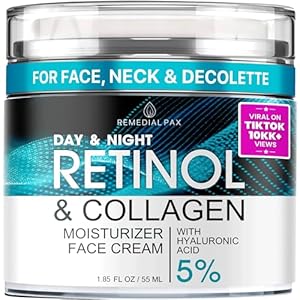
It is probably fair to say that the majority of work conducted to date on the treatment of aging as a medical condition has focused on mimicking and enhancing beneficial cellular responses to stresses such as lack of nutrients, heat, cold, toxins, and so forth. The bounds of the possible are illustrated by the results of regular exercise and the practice of calorie restriction. These interventions trigger all of the stress response mechanisms, so it seems unlikely that researchers will greatly improve on their performance with a therapy that targets only one of those mechanisms, or only one of the many regulators governing a given response mechanism. Both exercise and calorie restriction only slow the progression of aging, and are far removed from anything we might regard as a rejuvenation therapy capable of significant reversal of aging.
Autophagy is the most well studied of the cellular stress responses, the processes by which a cell recycles damaged structures. A number of drug development programs have aimed at increased autophagy as a means to improve aspects of health. An equally interesting set of mechanisms is covered in today’s open access review paper, the integrated stress response that operates in mitochondria to produce outcomes that affect the behavior of the whole cell and its signaling to other cells. There are ways to manipulate this stress response to produce beneficial outcomes, some of which have produced life extension in mice approaching that of calorie restriction.
The mitochondrial integrated stress response: A novel approach to anti-aging and pro-longevity
Mitochondria play a pivotal role in cellular energy metabolism, primarily responsible for the production of most cellular adenosine triphosphate (ATP) through a process known as oxidative phosphorylation (OXPHOS). However, this significant burden also causes mitochondria to be under constant stress. Especially under the condition of aging, mitochondrial function deteriorates due to the accumulation of mtDNA mutations, the destabilization of respiratory chain complexes, and alterations in mitochondrial dynamics. Consequently, the mitochondrial quality control system, which is primarily comprised of proteases, can be initiated. Furthermore, mitochondrial stress can also trigger cellular nonautonomous factors that facilitate communication between organelles, thereby regulating gene expression, metabolic reprogramming, and organismal longevity. Collectively, these processes form the mitochondrial integrated stress response (ISRmt).
Current studies indicate that the activation of the ISRmt relies primarily on mitochondrial stressors. The mild or early stage of ISRmt may elicit an adaptive stress response that is conducive to well-being and longevity while postponing the onset of multiple mitochondrial disorders. Evidence from model organisms reveals that mutations that reduce the activity of the mitochondrial respiratory chain yield a mean adult lifespan increase ranging from 20% to 300% in C. elegans. A similar increase in longevity has been achieved by reducing the expression of electron transport chain (ETC) components through the use of RNA interference (RNAi). In mice, a reduction in ETC proteins, particularly complex I subunits, increases lifespan by approximately 30%. The improvements in mitochondrial function and oxidative metabolism are contingent upon the adaptive ISRmt. Therefore, this beneficial adaptive stress response, which is induced by the inhibition of OXPHOS complexes, the depletion of mtDNA, or the uncoupling of mitochondria, has the potential to antagonize age-related diseases and promote longevity in clinical settings.
However, it is of paramount importance to address the off-target effects and toxicity associated with chronic ISRmt activation, especially in clinical trials. In this paper, we put forward three suggestions. Firstly, the induction of ISRmt should be reversible, such as the use of ETC component inhibitors rather than gene mutations. Secondly, the therapeutic strategy targeting the ISRmt should focus on boosting endogenous adaptive factors including FGF21, GDF15, and MTHFD2. Finally, pharmacological modulation of the core elements of ISRmt (eIF2α phosphorylation) warrants greater consideration due to the highly variable metabolic phenotypes. In comparison to pharmacological methods, FGF21, and its analogs have been proven to be generally well tolerated in clinical trials. Metformin, the most widely applied ISRmt inducer, has been approved by the FDA for treating type 2 diabetes, indicating its potential for human application.
Trending Products











